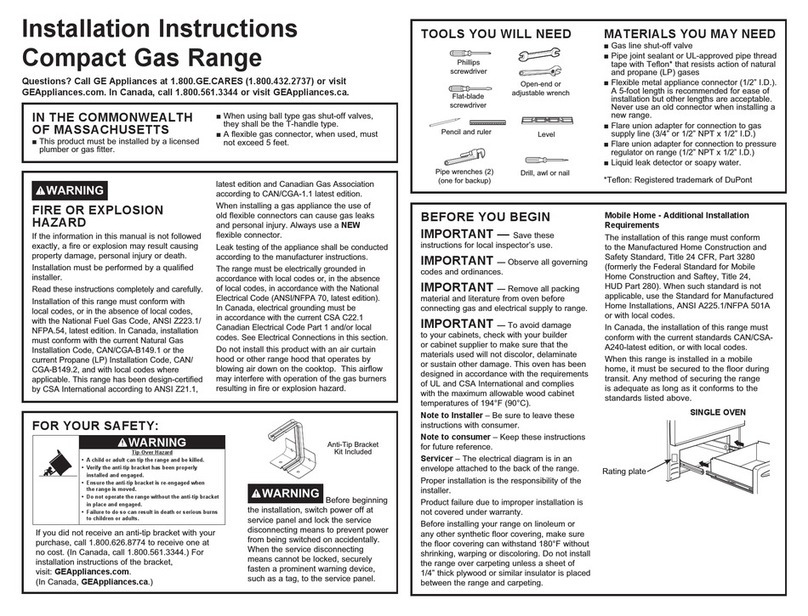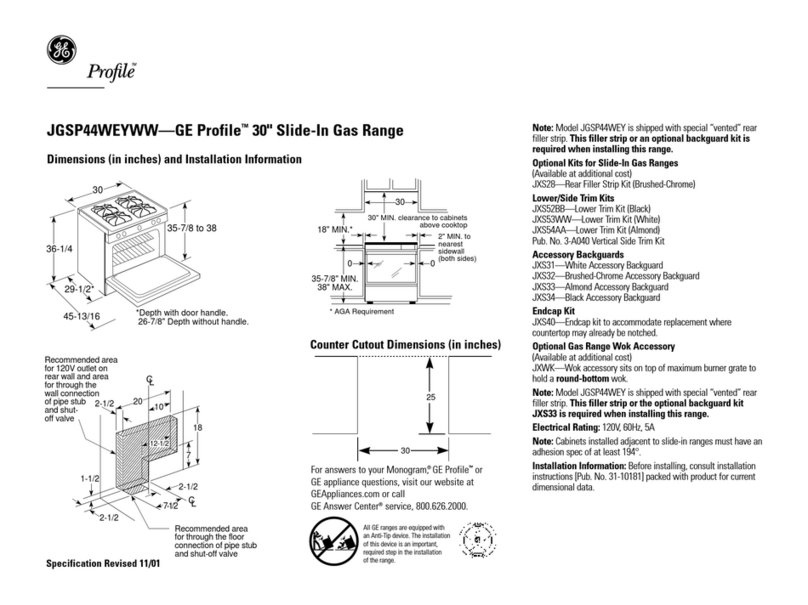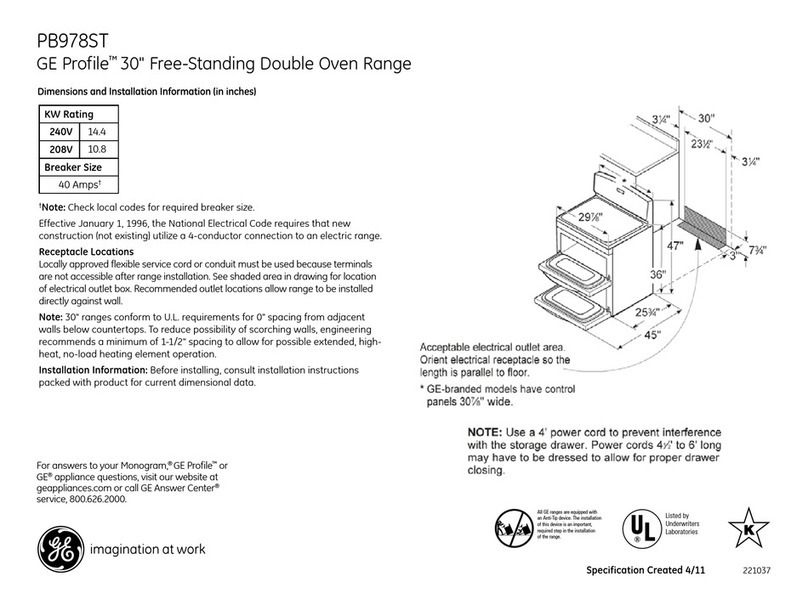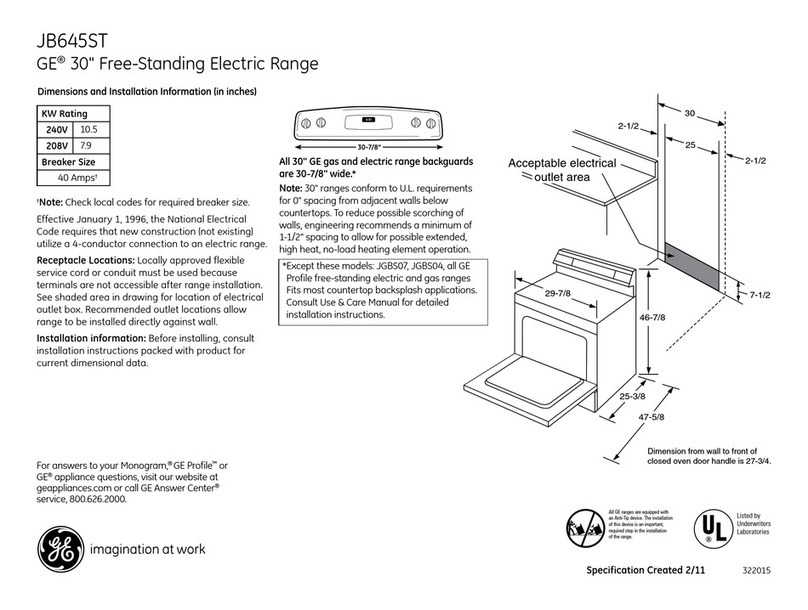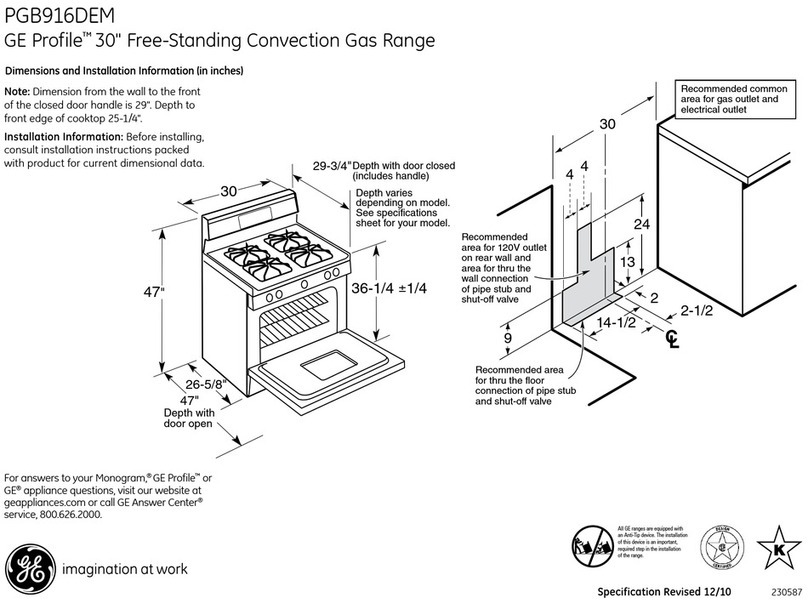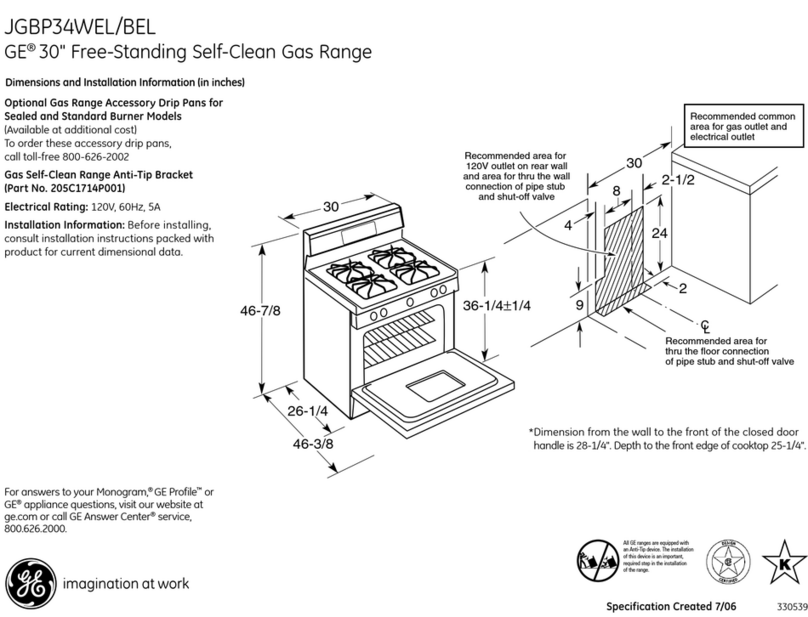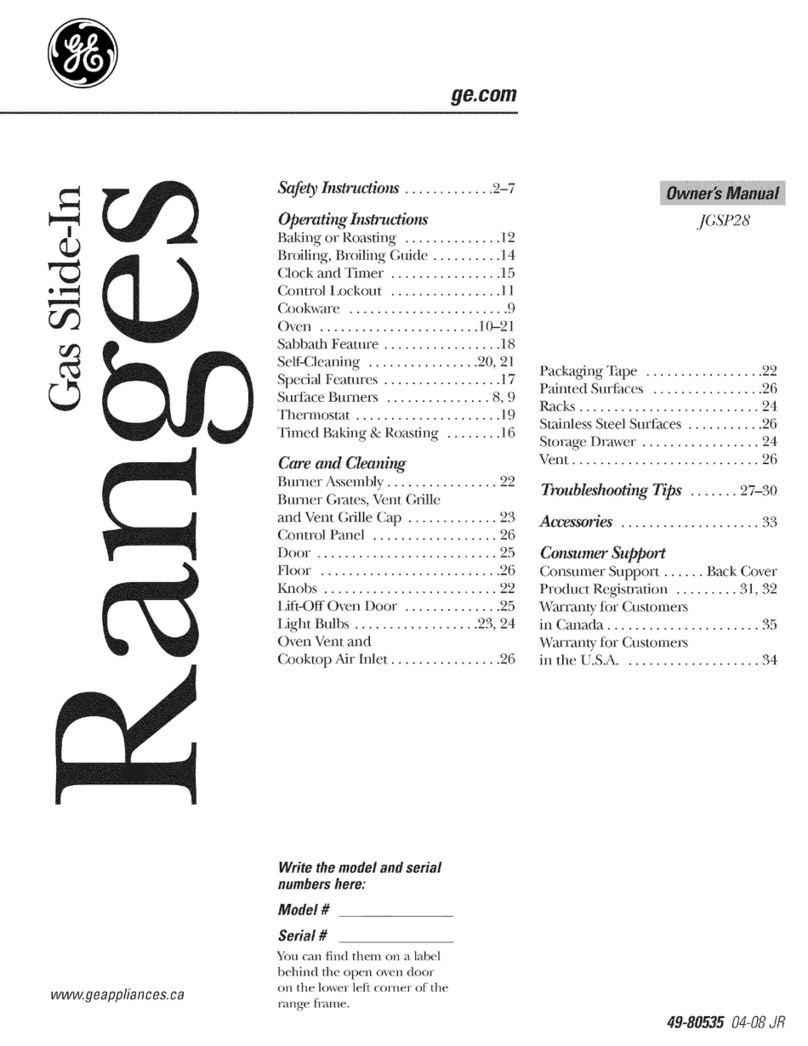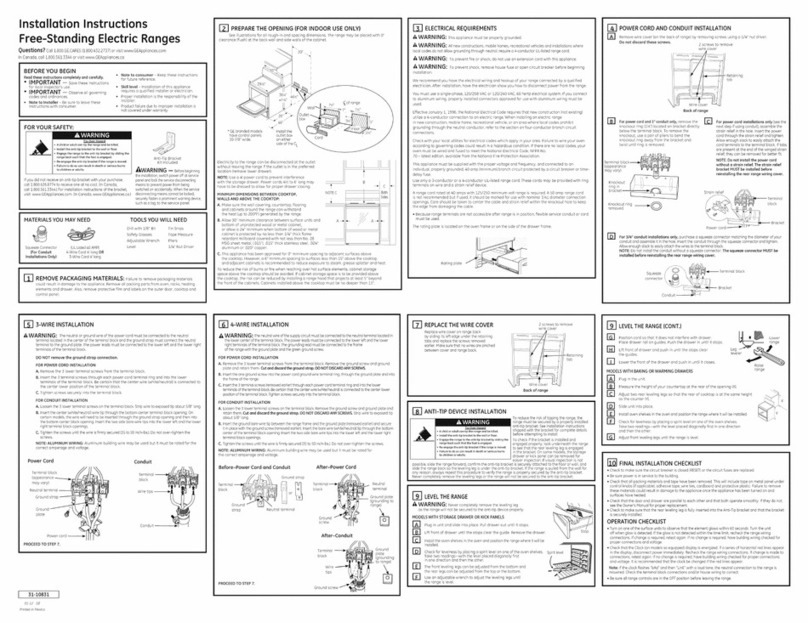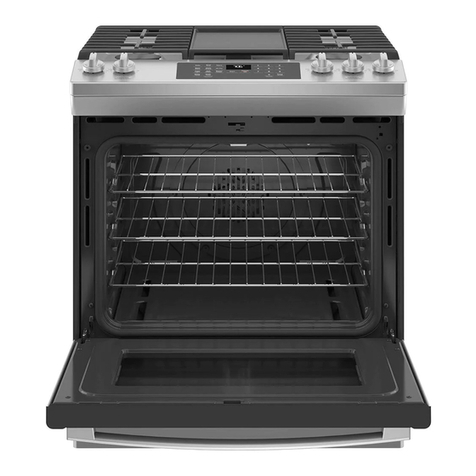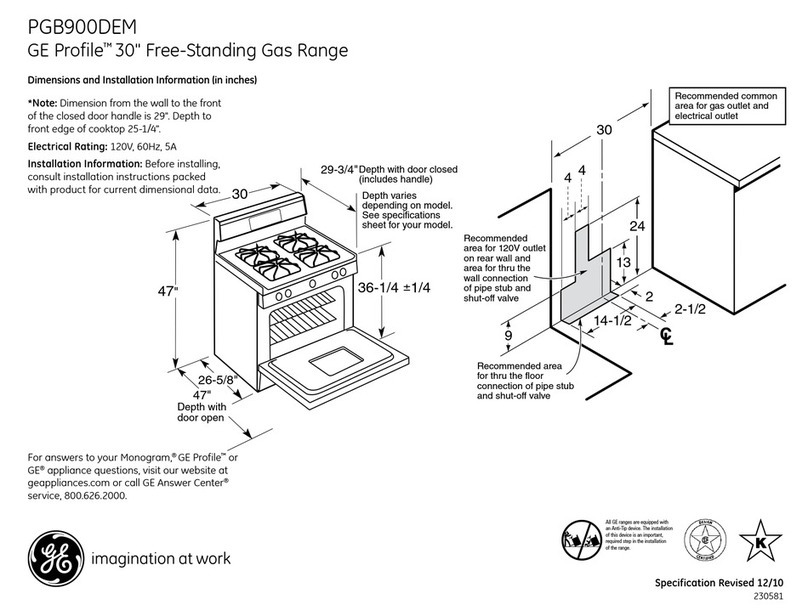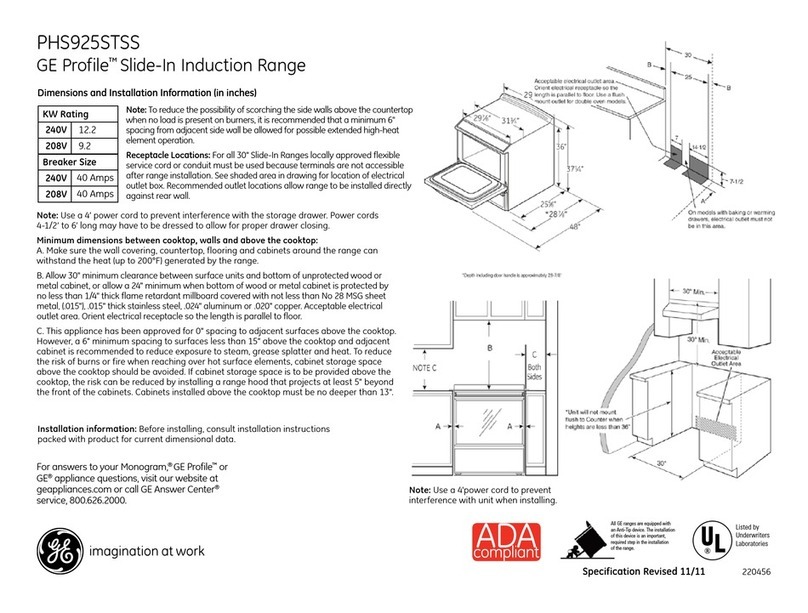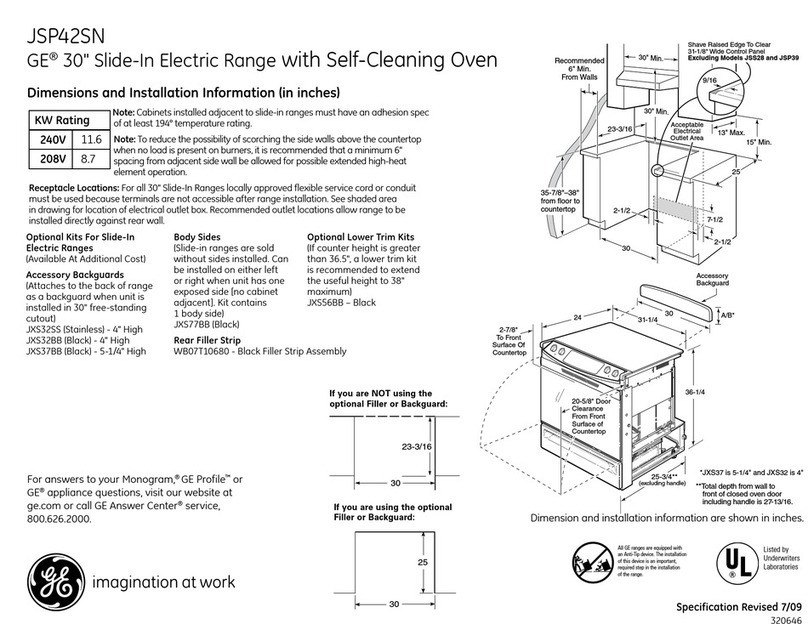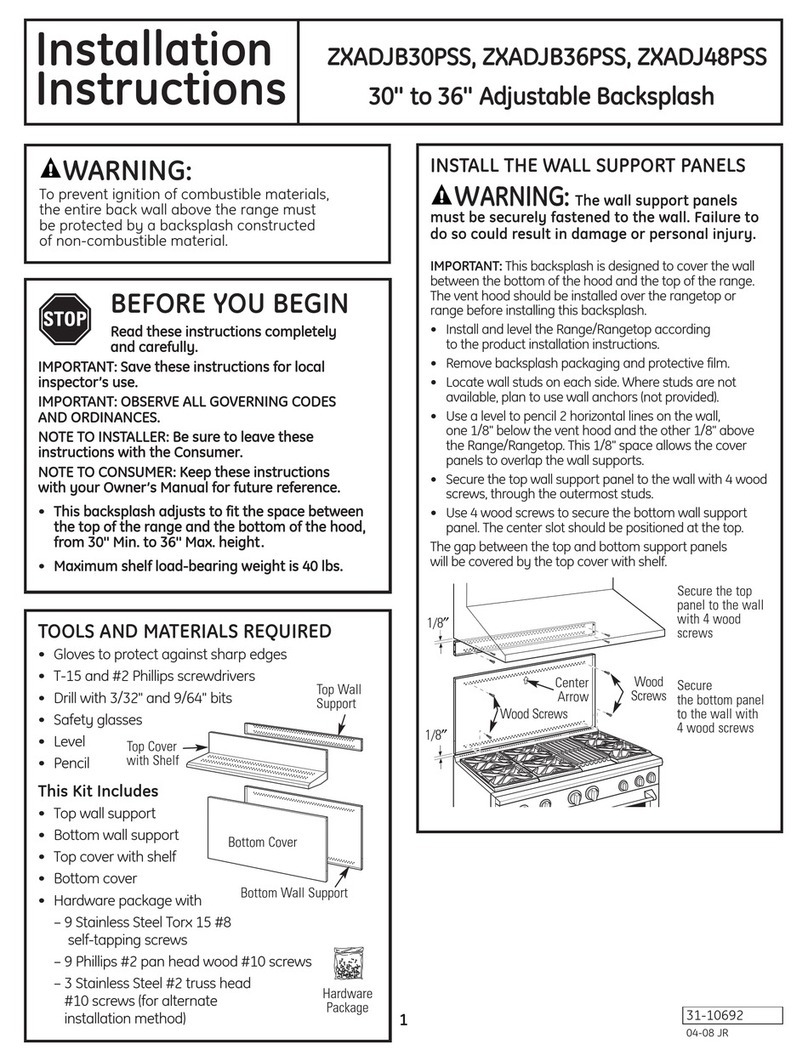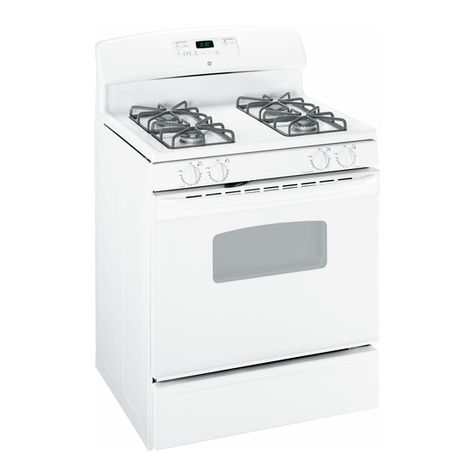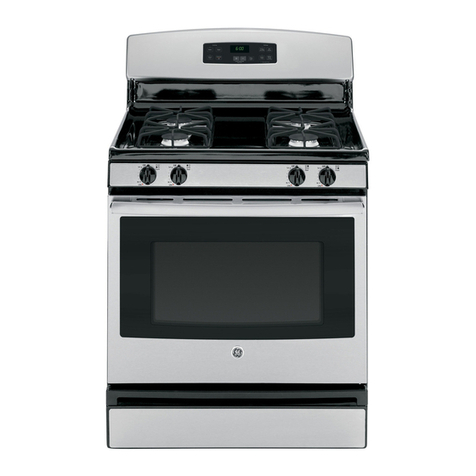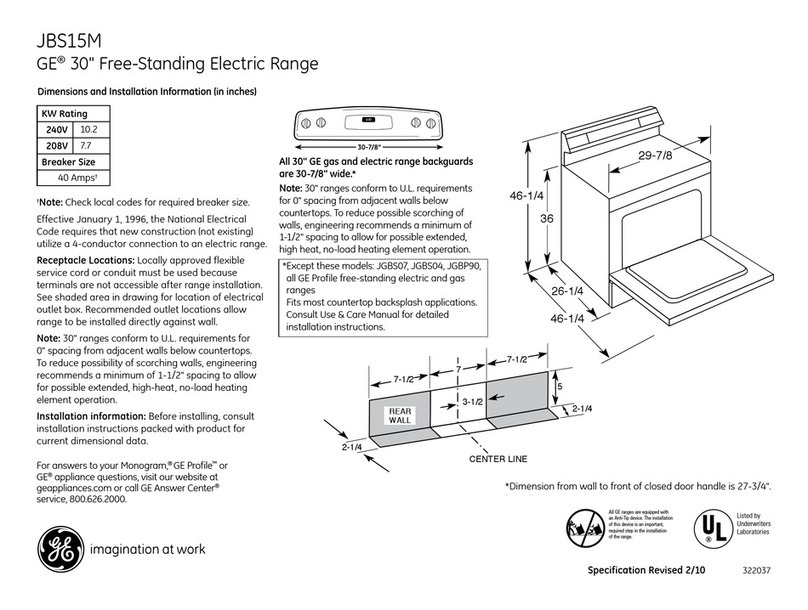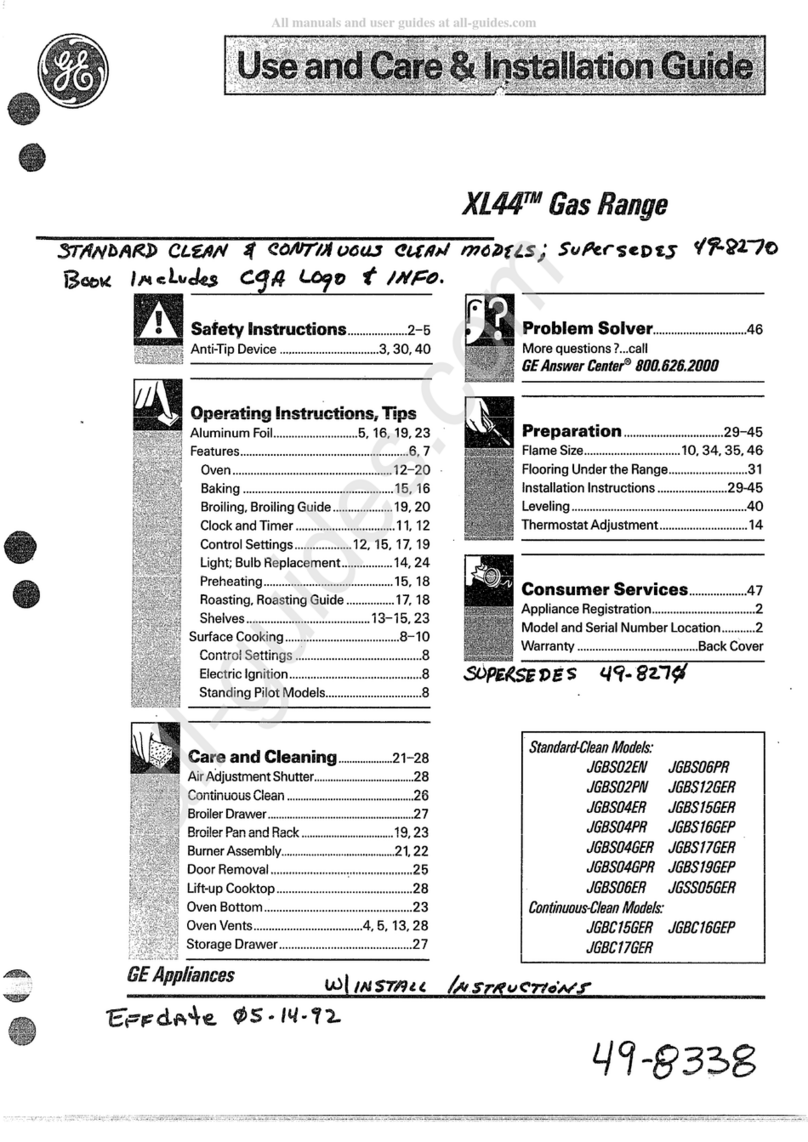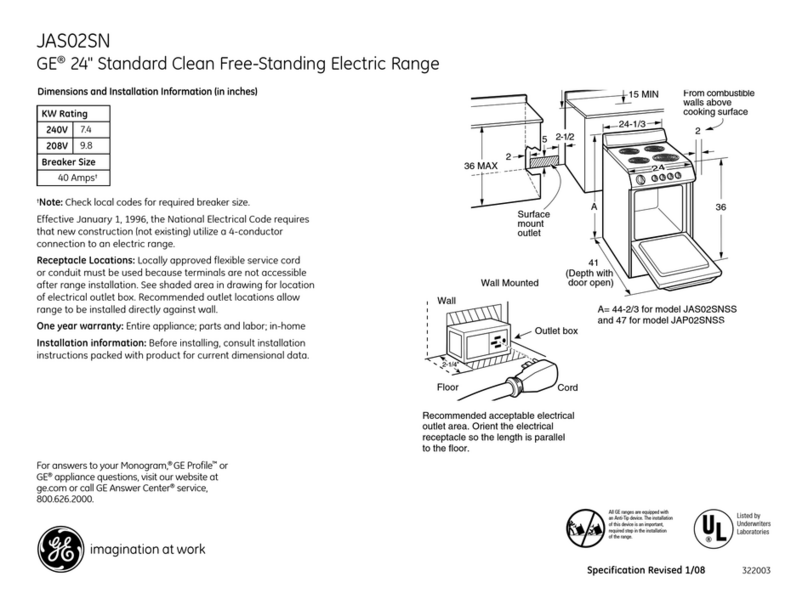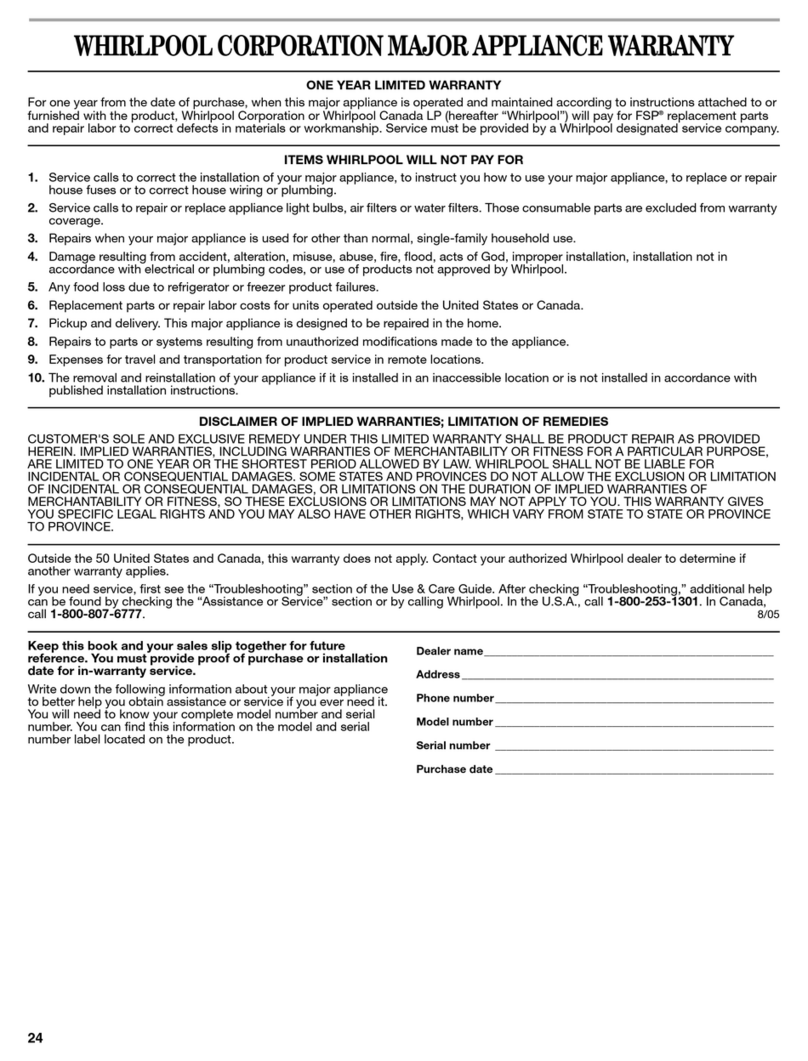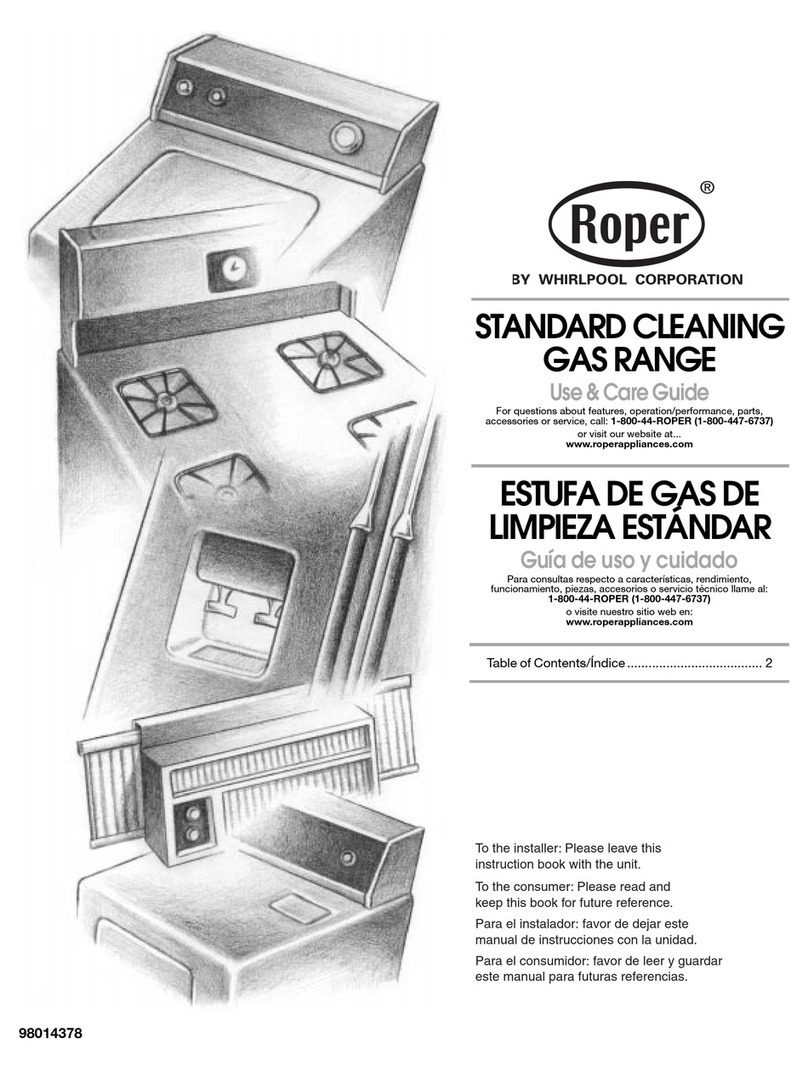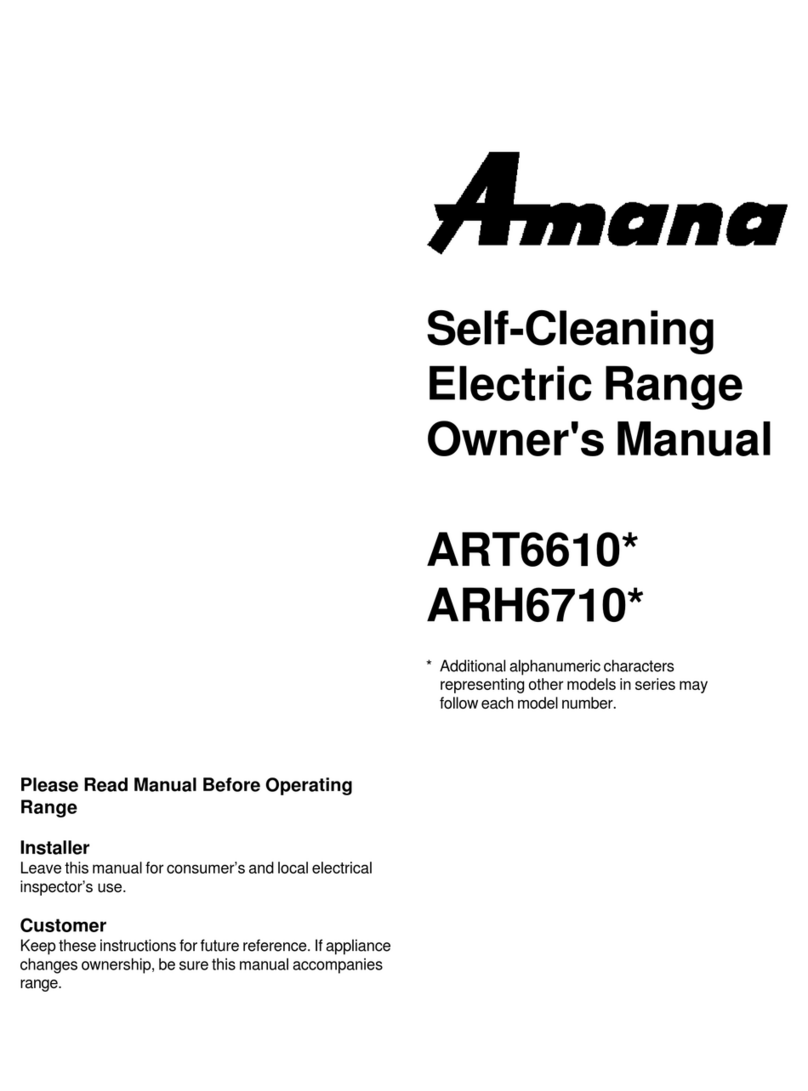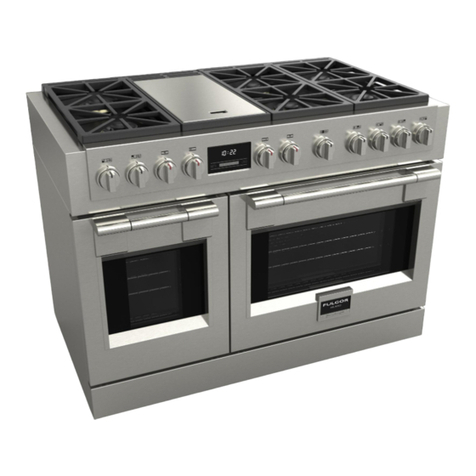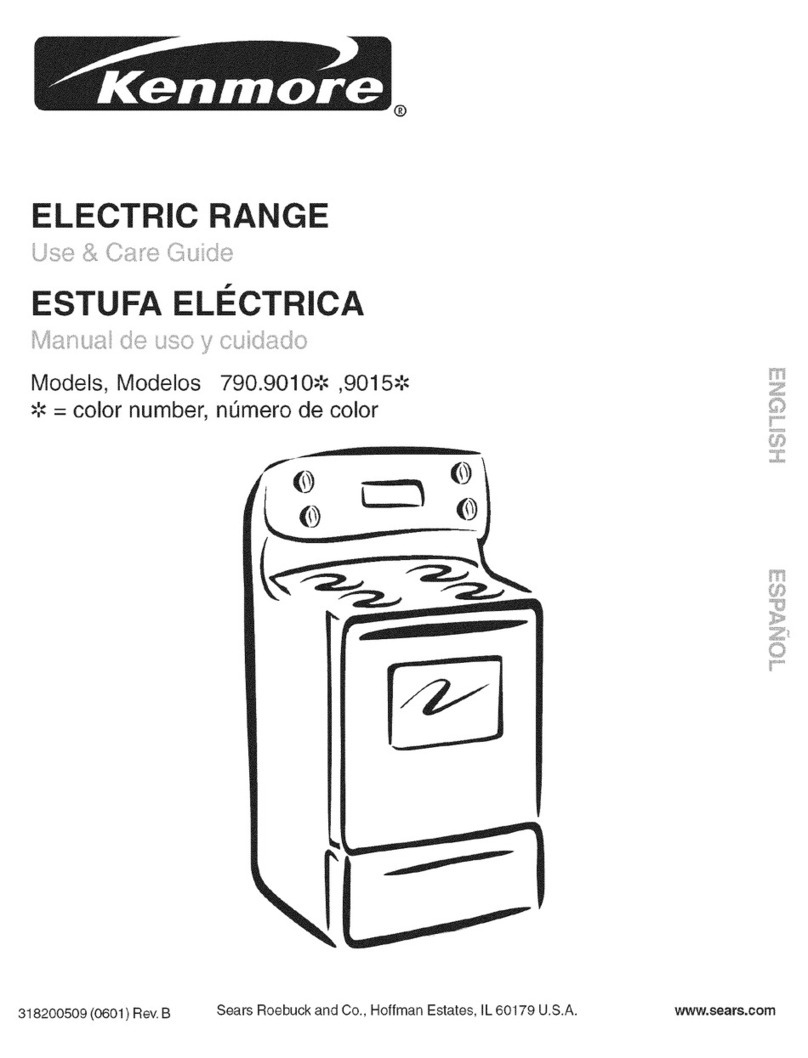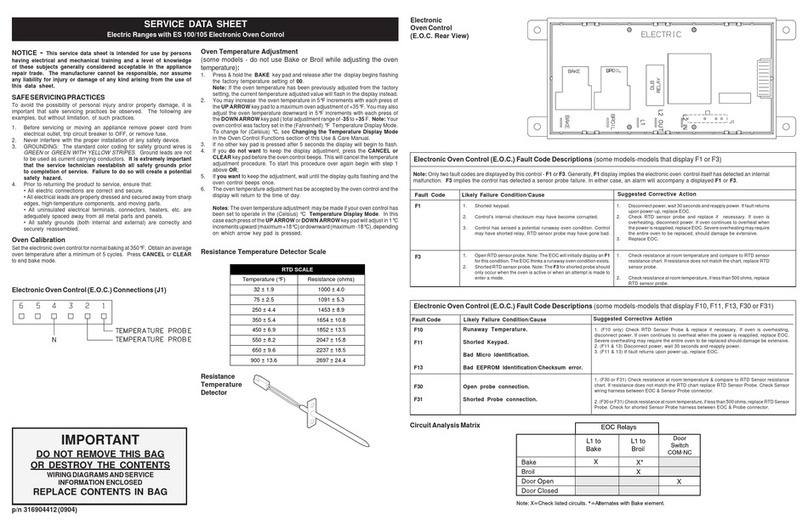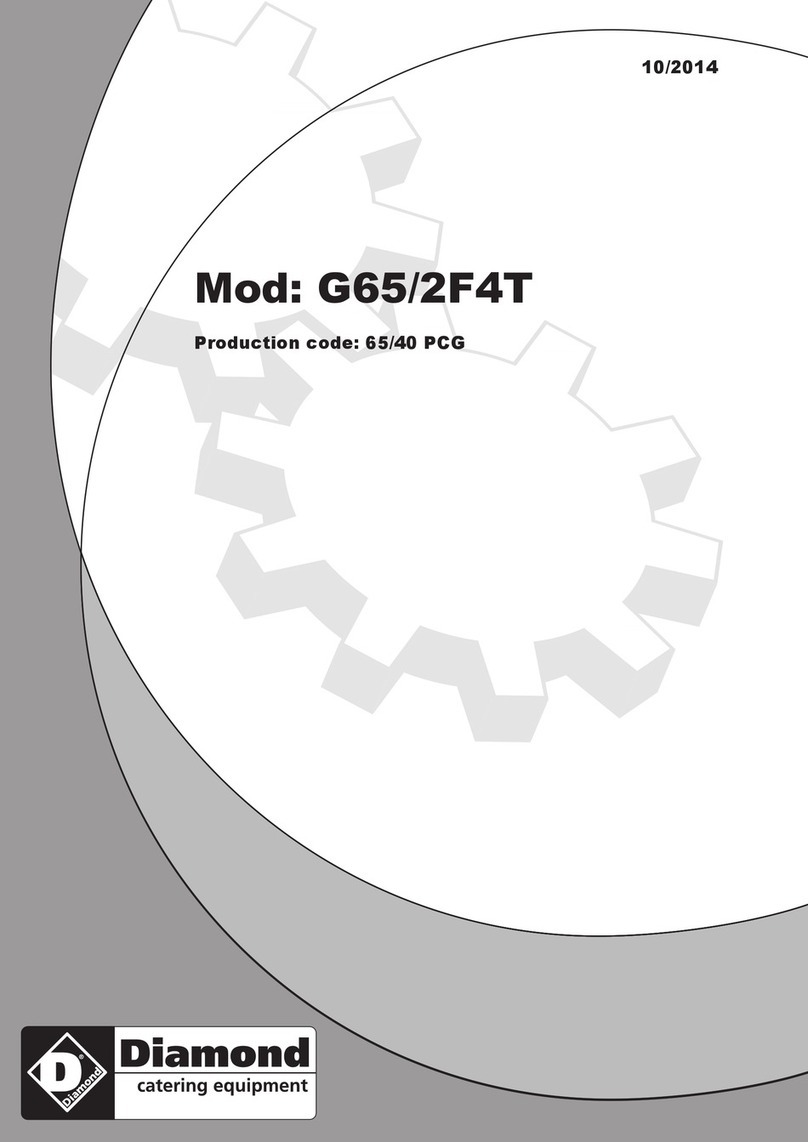
IMPORTANT SAFETY INSTRUCTIONS
(continued)
• CAUTION: ITEMS OF INTEREST TO
CHILDREN SHOULD NOT BE STORED IN
CABINETS ABOVE A RANGE OR ON THE
BACKSPLASH OF ARANGE--CHILDREN
CLIMBING ON THE RANGE TO REACH
ITEMS COULD BE SERIOUSLY INJURED.
- Do not allow anyone to cfimb, stand or hang
on the door. storage drawer or cooktop. The)
could damage the range and even tip it over.
causing severe personal injury.
•Let the burner grates and other surfaces cool
before touching them or leaving them where
children can reach them,
* Never wear loose fitting or hanging garments
while using the appliance, Be careful when
reaching for items stored in cabinets over the
cooktop. Flammable material could be ignited if
brought in contact with flame or hot oven surfaces
and may cause severe bums.
,Do not use water on grease fires. Never pick up
a flaming pan. Turn the controls off. Smother a
flaming pan on a surface unit by covering the
pan completely with a well-fitting lid. cookie sheet
or flat tray. Use a multi-purpose dry chemical or
foam-type fire extinguisher.
Flaming grease outside a pan can be put out by
coverm 8 it with baking soda or. if available, by
using a multi-purpose dry chemical or foam-type
fire extinguisher.
Flame in the oven can be smothered completely by
closing the oven door and turning the oven off or
by using a multi-purpose dry chemical or foam-
type fire extinguisher.
,Do not store flammable materials in an oven, a
range storage drawer or near a cooktop.
*DO NOT STORE OR USE COMBUSTIBLE
MATERIALS, GASOLINE OR OTHER
FLAMMABLE VAPORS AND LIQUIDS IN
THE VICINITY OF THIS OR ANY OTHER
APPLIANCE.
-Do not let cooking grease or other flammable
materials accumulate in or near the range.
• When cooking pork, follow the directions exactly
and always cook the meat to an internal temperature
of at least 170°F. This assures that. in the remote
possibility that trichina may be present in the meat,
it will be killed and the meat will be safe to eat.
Surface Cooking
- Always use the LITE position (on electric
ignition modds) or the HI position (on standing
pilot models) when igniting the top burners and
make sure the burners have ignited.
•Never leave the surface burners unattended at
high flame settings. Boilovers cause smoking
and greasy spillovers that may catch on fire.
,Adjust the top burner flame size so it does not
extend beyond the edge of the cookware.
Excessive flame is hazardous.
*Use only dry pot holders--moist or damp pot holders
on hot surfaces may result in burns from steam.
, Do not let pot holders come near open flames
when lifting cookware. Do not use a towel or other
bulky cloth in place of a pot holder,
-To minimize the possibility of burns, ignition
of flammable materials and spillage, turn cookware
handles toward the side or back of the range
without extending over adjacent burners.
- Always turn the surface burners to offbefore
removing cookware.
-Caretully watch foods being fried at ahigh
flame setting.
- Never block the vents (air openings} of the
range. They provide the air inlet and outlet that
are necessary for the range to operate properly
with correct combustion. Air openings are located
at the rear of the cooktop, at the top and bottom of
the oven door. and at the bottom of the range under
the storage drawer or kick panel,
. Do not use a wok on models with sealed burners
if the wok has a round metal ring that is placed
over the burner grate to support the wok. This
............... trap, which may damage the
burner grate and burner head. Also. it may cause
the burner to work improperly. This may cause a
carbon monoxide level above that allowed by
current standards, resulting in a health hazard.
-Foods for frying should be as dry as possible. Frost
on frozen foods or moisture on fresh foods can cause
hot fat to bubble up and over the sides of the pan.
. Use the least possible amount of fat for effective
shallow or deep-fat frying. Filling the pan too full
of fat can cause spillovers when food is added.
, Use a deep fat thermometer whenever possible to
prevent overheating tat beyond the smoking point.
*Never try to move a pan of hot fat, especially a
deep fat fryer. Wait until the fat is cool,
•Always heat fat slowly, and watch as it heats, • When using glass cookware, make sure it is
4designed for top-of-range cooking.
